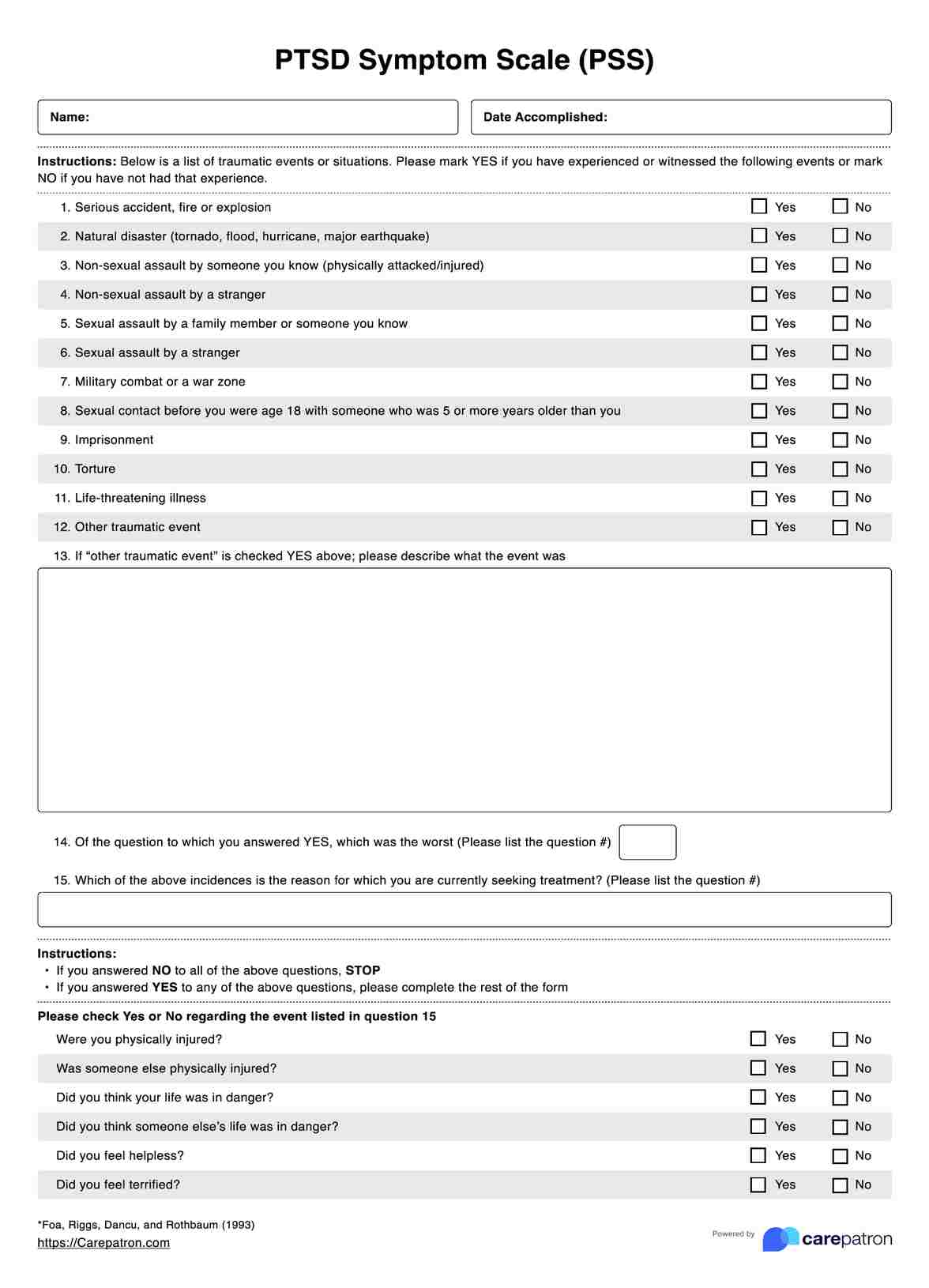It shouldn’t take longer than 10 minutes, but of course, considering the subject matter, don’t be surprised if it takes too long. The important thing is your patient is able to finish answering it. To help them do that, give them the time and space they need to do so.

PTSD Symptom Scale
If you have a patient suffering from PTSD and you’re looking to treat it, use this nifty PTSD Symptom Scale (PSS) to gauge the symptoms and the severity of their PTSD.
PTSD Symptom Scale Template
Commonly asked questions
Yes. The only thing you need to know is that the higher the score your patient has, the more likely it is that their symptoms of PTSD are more severe. If you want, you may even use other related assessments to give you a more well-rounded perspective on the matter.
Yes, but under no circumstance should you diagnose yourself or make any medical-related decisions in relation to whatever result you get, save for seeing an actual professional. This is also a screening tool, not a diagnostic tool.
EHR and practice management software
Get started for free
*No credit card required
Free
$0/usd
Unlimited clients
Telehealth
1GB of storage
Client portal text
Automated billing and online payments











